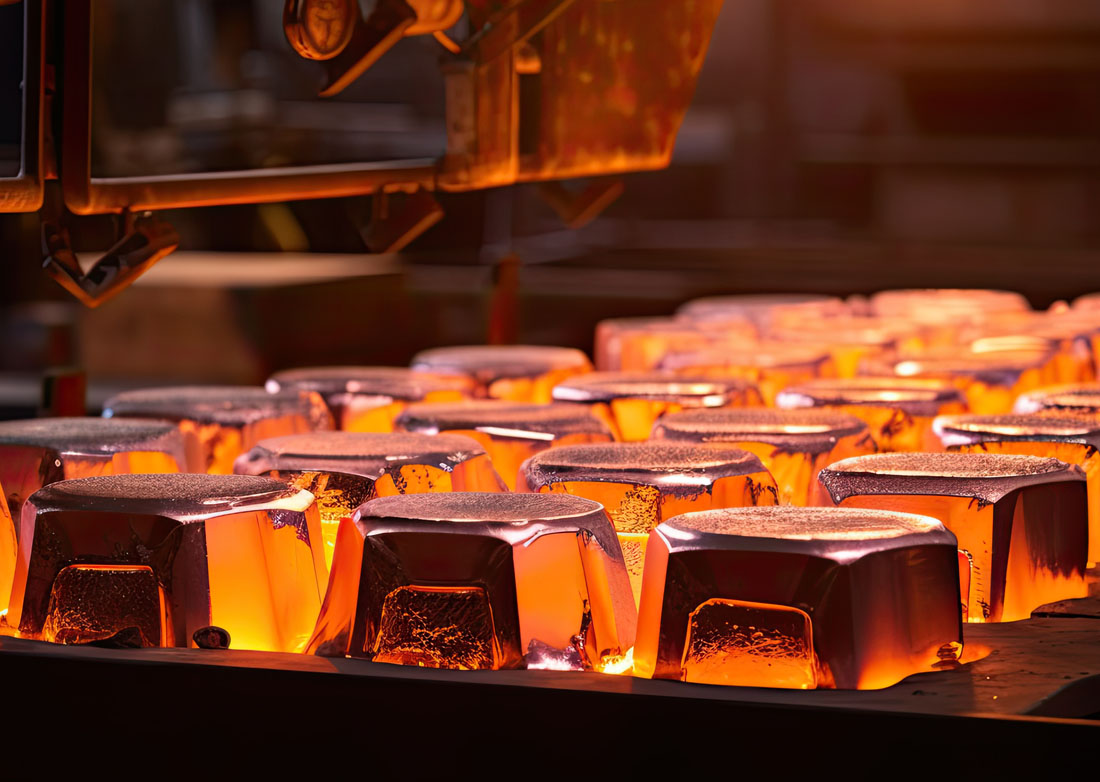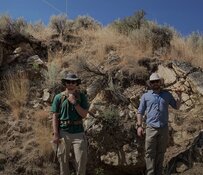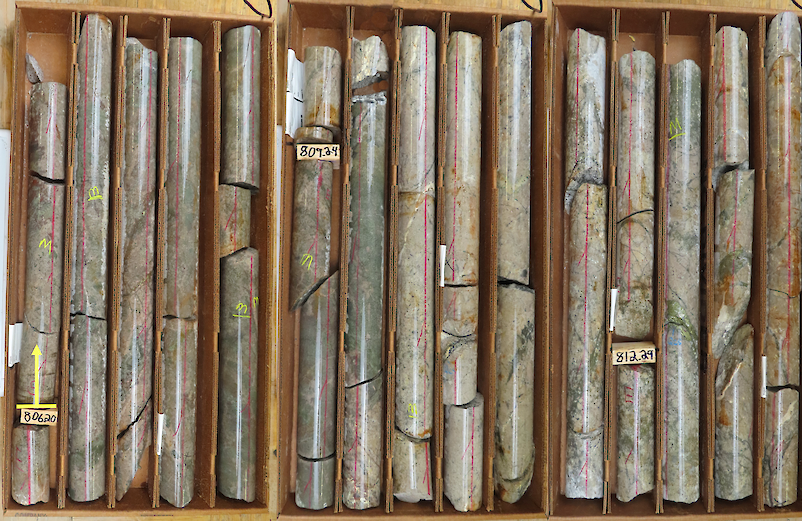The Critical Metals Report: In the last nine months, poor stock performance has shaken investors' confidence in the rare earth elements (REEs) sector. What will restore their risk appetites?
Byron King: We need to see successful efforts from developers. Molycorp Inc. (MCP:NYSE) is not the success story it should have been. Molycorp presented itself as an all-American, mine-to-magnets resource, but when it joined forces with Neo Material Technologies (NEM:TSX), its research and development went to Singapore and its manufacturing to China. Its share price is down from a where it was a few months ago, let alone a year ago.
Lynas Corp. (LYC:ASX) was another great hope, but it has had trouble getting its plant in Malaysia up and running. Just as it was nearing the end of construction, local communities raised concerns about radiation in the materials the company is processing and bringing in from Australia. You have to wonder about the source of those problems. Cynics would say, follow the money. What do key Chinese players think about a new, Western player in the sector?
Looking at the smaller developers, their efforts have been slower and more expensive than expected. They prove the rule that nothing is easy in the REE space. It is a hard, technical space to work in. Many management teams are feeling their way through the maze.
"Everybody is getting slammed. At the same time, some of the really smart money sees this as the perfect opportunity to buy low." –Byron King
TCMR: What other factors are putting pressure on the sector?
BK: There are larger issues related to the general pullback in the natural resource and energy spaces, and in the broader global markets. It impacts everybody, and certainly the resource players. China is slowing down, partly due to the unwinding European economy and the euro. As the euro comes undone, the dollar strengthens. Many companies working outside the U.S. see their local currency declining in value, but their dollar-measured costs are going up. Things are becoming more difficult to do—more expensive and less economic.
TCMR: Has the European debt crisis impacted REE juniors?
BK: The European debt crisis is a constant drumbeat. Investors everywhere are concerned about waking up one morning to find Europe falling off an economic cliff. This does no good for the stock markets or the resource markets. The REE guys are caught in the suction along with many others.
TCMR: Is the resource sector more vulnerable than others to the economic climate?
BK: I think it is. Macroeconomic uncertainty definitely affects the developers. The big resource players—BHP Billiton Ltd (BHP:NYSE; BHPLF:OTCPK), Rio Tinto (RIO:NYSE; RIO:ASX) and Vale S.A. (VALE:NYSE)—live through ups and downs. In a recession, they know what to do: Shut the mine down and wait for prices to rebound.
Micro-cap or small-cap resource developers don't have that luxury. They lack the deep pockets. When the markets pull the rug out from under their stock, small developers have a problem.
TCMR: Can REE juniors raise cash in this environment?
BK: No. Absolutely not. Their share prices are down. To the extent that your share price is your currency, management will get into an awful dilution situation while trying to raise significant amounts of cash; in addition, companies will find themselves behind the cash-raising eight ball when the people with the money demand onerous terms. Funders will take shares, but will also want long-term, high-value warrants that will essentially put a cap on any upside to the share price. Right now, fundraising is equivalent to wrecking your share structure.
TCMR: How do you evaluate companies with little or no cash on hand?
BK: I look at the cash situation very carefully. There is no magic number that a company has to have for me to look at it. The burn rate is more relevant. If it has cash and is not spending it, then it's okay. I don't mind waiting for other developments to come around—for example, low-cost developments like completing a negotiation—that's fine. I can deal with a company that doesn't have a lot of cash, but whose drilling program or engineering program is completed.
But if a company has little cash but big ambitions to drill holes or hire a big-name engineering or chemistry company to do a lot of back office work? That's a very dangerous combination.
TCMR: In an interview earlier this year, you predicted "good plays" among technology metals companies would see new highs in 2012, while there would be a "shakeout" of the lesser companies. Share prices of some technology metals companies have hit new lows, but we have yet to see many reach new highs. Do you still believe we will see all-time highs in 2012?
BK: We have six more months in 2012, which is a lifetime in the junior resource sector. I think the shakeout is going on right now. Some of the bodies are in the process of assuming room temperature. In my view, by the end of the year, there will be fewer companies in the high-end technology metals space. Some of the name-brand companies we have been following will consolidate, or they'll just go back to being shell companies that will drop off the investment radar screen.
Still, it's not all gloom. I like to focus on success, which remains a virtue even in a bad market. In the next six months, I believe some companies will make the kind of deals, the progress and the announcements that could move their shares remarkably and underpin investor confidence in the long-term REE play.
TCMR: You have called Stans Energy Corp. (HRE:TSX.V) a "dealmaker." What is Stans doing today?
BK: I think Stans is much closer now to being a dealmaker than it was a couple of months ago. I check the news flow for Stans daily, because I think that deal could happen any day.
TCMR: Could that be an offtake partner?
BK: It could involve third-party funding, third-party joint venturing or offtake agreement. Stans has the capacity to do any or all of those.
"We have six more months in 2012, which is a lifetime in the junior resource sector. I think the shakeout is going on right now." –Byron King
What makes me confident about Stans is the quality of its basic asset and the human skills the company has access to in Russia and Kyrgyzstan. If its asset and people were located anywhere else, Stans would already be the talk of the REE investment space. There's just a strong bias against the perceived political risk in Russia and Kyrgyzstan. To me, this sets Stans up as a strong contrarian play.
I believe the Russians are tired of being a one-trick economic pony, exporting oil and gas and not much else. They want to capitalize on the science and engineering skills of their people. In Kyrgyzstan, the political powers want to leverage whatever assets they can, and its REE play is a critical, world-class asset.
TCMR: Stans has a draft version of its prefeasibility study on its Kutessay II heavy rare earth element (HREE) project in Kyrgyzstan. Why has it not been published?
BK: My understanding is that Stans management wants to finalize the renewal of its license in Kyrgyzstan. Until then, there's no need to say anything that could make the license renewal more expensive.
TCMR: The prefeasibility study is expected to contain a larger resource based on recent drill results. What are investors looking for in the prefeasibility study: a larger resource or a clear path to extraction and separation of the different HREEs?
BK: A larger resource never hurts because it shows more overall value. But the markets are thinking and acting in a very short-term mode. Share buyers want to see deals with immediate consequences. The most important thing Stans, or any firm in the junior resource space can do right now, is show deals and progress with an immediate effect. That would include offtake deals and joint ventures that bring financing to the table.
TCMR: Is Stans any further along in figuring out its metallurgy?
BK: Yes, Stans has made excellent progress toward presenting a workable process from crushing the ore to separating out a sellable concentrate. Don't ever underestimate the Russians. Recall that that's what Napoleon did 200 years ago this year, and look where it got him.
TCMR: What other REE plays are worth watching?
BK: Ucore Rare Metals Inc. (UCU:TSX.V; UURAF:OTCQX) has a mineral claim on Prince of Wales Island, offshore of Ketchikan, Alaska. In the last 18–24 months, Ucore has made superb progress bringing the project into a workable play. The basic geology happened last year: mapping, drilling and preliminary mine planning. Also last year, the rock crushing and the basic metallurgy were refined at the Hazen laboratory in Denver. All of this is happening in the U.S. Ucore truly plans to become that proverbial, all-American play.
TCMR: Would you agree with the U.S. Geological Survey that Ucore's Bokan deposit is the most significant HREE deposit in the U.S.?
BK: Yes, and it is significant for several reasons. It is mineable and will produce a very high-quality ore, rich in HREEs. Ucore also has gotten its cost per ton way down compared to others in the HREE space.
TCMR: What is the timeline to production?
BK: I would say that Ucore will complete the preliminary stages this year and next. I would expect to see the first products by early to mid-2014.
TCMR: Are you following other REE plays?
BK: I have been keeping an eye on Medallion Resources Ltd. (MDL:TSX.V; MLLOF:OTCQX; MRD:FSE). Its management includes world-class mineralogists who understand how to go straight to the metallurgy. Right now, the company is working in the Indian Ocean basin, with a plan to extract a mineral called monazite out of the mineral sand stream.
"The markets are in a very short-term mode. The most important thing any junior resource firm can do right now is show deals with an immediate effect, [such as] offtake deals and joint ventures." –Byron King
The monazite is already being handled by other mineral sand processors who take ilmenite, cassiterite, rutile and other minerals from mineral sands. They don't take monazite because there is no market for it. Medallion's business plan is to take the monazite off their hands. So Medallion can skip the mine-building side of things, and go straight to handling a concentrated mineral fraction.
The separation is fairly simple and monazite is easy to ship. Medallion is pursuing opportunities for offtakes of monazite, supplying it to users who can put it straight into a processing stream. Medallion is leapfrogging much of the developmental work to focus on monazite mineral sands. It is a different business model that deserves watching.
TCMR: A lot of monazite contains thorium, a radioactive mineral. How will Medallion deal with that?
BK: That low-grade radiation issue is one of reasons almost no one is separating monazite right now. If a mineral sands operator piles up monazite, it has a low-grade radiation issue and the government people show up to ask questions. But if a buyer comes along that can handle thorium safely, and has a business model that sends the thorium to an end user, it avoids the problem. Thorium is not a showstopper in India for example, because the government and industries there actually have designs on thorium in the future.
TCMR: A buzz is growing over beryllium. Tell us about that metal.
BK: Beryllium is an astonishing metal. It is lightweight, very strong and has a high melting point. It is not magnetic, does not spark and it absorbs vibration very well. It has many uses in the aeronautics and aerospace industries.
For example, Boeing has gotten pushback from customers over the weight of its 787 Dreamliner and new version of the big jumbo jet, the B-747-8. Beryllium is a key part of Boeing's Weight Watchers program. Substituting beryllium in various components allows Boeing to shed pounds. That is a great opening for beryllium producers and processors.
TCMR: How many of those are there?
BK: Not very many. The largest and best known is Materion (MTRN:NYSE), formerly called Brush Engineered Materials Inc. or Brush Welcome.
TCMR: What other metals or minerals pique your interest these days?
BK: I have been working in the carbon space, in particular graphite and its downstream applications in carbon nanotubes, high-end carbon composites, batteries and graphene.
There are two types of graphite: natural graphite from rocks in the ground and synthetic graphite that comes from petroleum coke. A lot of the high-end uses rely on synthetic graphite.
TCMR: Is graphene made from synthetic graphite?
BK: Most graphene today is made in laboratories using a carbon-vapor deposition process. It is still very exotic, very expensive and very difficult to make. It is being manufactured on the order of a few grams here and a few grams there. The discoverer, Andre Geim, who received the Nobel Prize in Physics in 2010, jokes that graphene only costs "a few cents per atom" to make.
However, a lot of research is underway about processes that will convert high-grade graphite into much larger quantities of graphene. That offers a huge investment upside.
TCMR: The graphite space today is where REEs were in mid-2010. The tide is floating all boats. How long do you expect the run in graphite equities to last?
BK: When I look at graphite, it's all about the overall grade and quality of the material. The higher grade, the higher the quality. Of course, the larger the tonnage, the better the prospects.
A producer has to deliver and price a product based on its cost per ton. In that sense, higher grade and better initial quality of the graphite in the ground make for better prospects for a given company.
"Processes [in the research phase] could convert high-grade graphite into much larger quantities of graphene. That offers a huge investment upside." –Byron King
The bloom is already coming off the rose. In the last month, graphite prices out of China were down about 20%. The slowdown in China's economy translates into less internal need. Less internal usage means more graphite is available for export.
In the West, developers with graphite plays will have to work their deposits up to NI 43-101 standards, then build a mine and a processing plant. The good news is that mining and processing graphite is a lot cheaper and a lot less technically complex than an REE play, or even most gold mines.
TCMR: Graphite prices are set between buyer and seller. But we have yet to see a graphite deal with an end user. How far off is that?
BK: I think you'll see agreements this summer and certainly by the end of the year. Developers need those agreements to fund engineering and construction. The companies that make end-user agreements will move the market the day they announce an agreement.
Two developers are reopening old mines. In Sweden, Flinders Resources Ltd. (FDR:TSX.V) is re-starting its old facilities. Northern Graphite Corporation (NGC:TSX.V; NGPHF:OTCQX) is reopening an old mine in Canada, called Bissett Creek.
TCMR: Which will get to production first?
BK: Flinders is already selling product stockpiled from previous operations, giving it both cash flow and an operating business cycle. I have the greatest respect for a developer that can sell product during development.
TCMR: Are there any other graphite plays worthy of a mention?
BK: Focus Graphite Inc. (FMS:TSX.V) and Energizer Resources Inc. (EGZ:TSX.V; ENZR:OTCBB) both make an exceptional case for the future.
TCMR: Focus is working on the Lac Knife deposit in Québec, one of the world's highest-grade graphite deposits. What are its plans to get to production?
BK: I've visited Lac Knife, and have samples of its graphite here on my desk. Frankly, the Lac Knife specimens are some of the best graphite I have ever seen.
The deposit is in the far north, on the border of Québec and Labrador, right next to a Hydro-Québec power line easement with roads. It is 20 to 30 miles from the ArcelorMittal S.A. (MT:NYSE) iron ore mine at Fermont. You could not ask for better infrastructure, labor and electric power or a more mining-friendly jurisdiction.
TCMR: Have you visited Energizer's site in Madagascar?
BK: Yes. It is an astonishingly large deposit of super-high-grade graphite. Every time Energizer drills another hole, it finds more, usually better data that improves the overall quality. In terms of the development logistics, I think it is extremely do-able at a fairly low cost, despite being in an austere, developing-world political environment.
TCMR: Energizer has not gotten its vanadium project in Madagascar off the ground. What makes you think the company can bring the graphite project to production?
BK: I think the market misinterpreted what Energizer is doing. Its vanadium and graphite are practically co-terminus within the same deposits and the same claims; I have seen the drill cores.
When Energizer realized it was sitting on top of a super, world-class graphite deposit, it changed the focus of its development plan from vanadium to graphite. I think the vanadium deposits will be developed in due course. But graphite gives the company more bang for the buck, and a heck of a lot sooner.
TCMR: Do you have any parting thoughts on the critical metals sector through the end of 2012?
BK: We are in the midst of a terrible market for the resource sector in general and the junior developers in particular, and it is not unique to REEs, graphite or anything else. Everybody is getting slammed. At the same time, some of the really smart money sees this as the perfect opportunity to buy low.
There are 7 billion people in the world, most of them are plugged into the global information stream. They know what a better life looks like, and they want one. Achieving that better life will require more resources in terms of energy, metals like copper and such, and technology metals like REEs, graphite, beryllium and more. Despite today's global economic issues and down-in-the-dumps resource markets, demand for these products is there. That demand will pull along the developers. Unless the wheels fall off the whole world, development has to work that way. Take advantage of low share prices to, as the saying goes, "buy low."
Byron King writes for Agora Financial's Daily Resource Hunter. He edits two newsletters: Energy & Scarcity Investor and Outstanding Investments. He studied geology and graduated with honors from Harvard University, and holds advanced degrees from the University of Pittsburgh School of Law and the U.S. Naval War College. He has advised the U.S. Department of Defense on national energy policy. Click here for a free copy of Byron King's award-winning Outstanding Investments.
Want to read more exclusive Critical Metals Report articles like this? Sign up for our free e-newsletter, and you'll learn when new articles have been published. To see a list of recent interviews with industry analysts and commentators and learn more about critical metals companies, visit our Critical Metals Report page.
DISCLOSURE:
1) Brian Sylvester of The Critical Metals Report conducted this interview. He personally and/or his family own shares of the following companies mentioned in this interview: None.
2) The following companies mentioned in the interview are sponsors of The Critical Metals Report: Stans Energy Corp., Ucore Rare Metals Inc., Medallion Resources Ltd., Northern Graphite Corp., Focus Graphite Inc. and Energizer Resources Inc. Streetwise Reports does not accept stock in exchange for services. Interviews are edited for clarity.
3) Byron King: I personally and/or my family own shares of the following companies mentioned in this interview: None. I personally and/or my family am paid by the following companies mentioned in this interview: None. I was not paid by Streetwise for participating in this story.




































